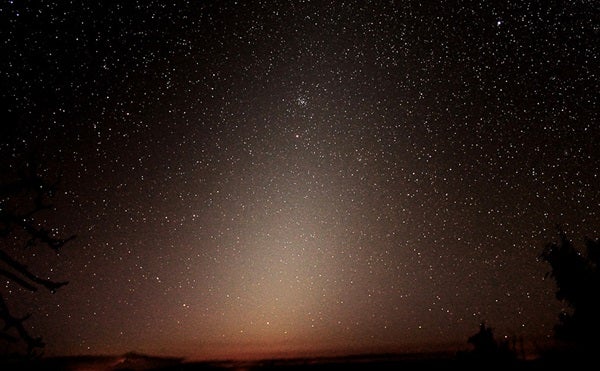The dust from collisions between asteroids and comets and also left over from the formation of the planets is occasionally visible as a triangle-shaped patch called the zodiacal light (on the right of this image). This dust lies along the same plane as the solar system’s major bodies.
ESO/Y. Beletsky (LCO)
We think the dust in our solar system (often called “cosmic dust”) originates largely from collisions between asteroidal bodies in addition to active comets as they spew material during their passages through the inner solar system. Scientists estimate that roughly 100 metric tons of this cosmic dust enters Earth’s atmosphere every single day. This estimate comes from data from spacecraft that have measured the amounts of dust in the inner solar system and also from micrometeorites and interplanetary dust collected on Earth’s surface.
So cosmic dust adds about 40,000 metric tons per year to Earth’s mass. Even though this may seem like a very large amount, it is in fact minuscule compared to our planet’s mass (about 6,000 billion billion metric tons). Thus, it does not affect to any significant degree the gravitational force that our planet exerts at the present time.
Meenakshi Wadhwa
Arizona State University, Tempe
Arizona State University, Tempe










